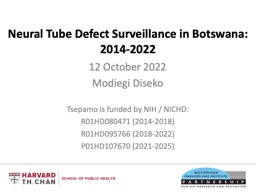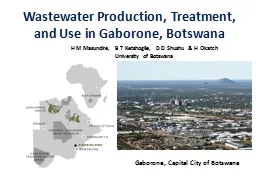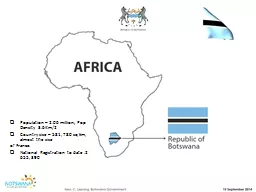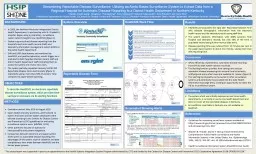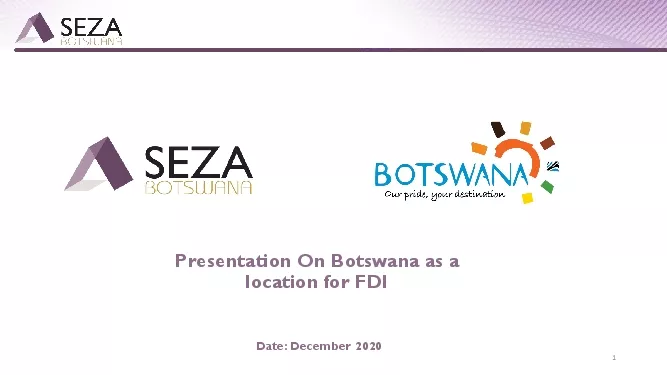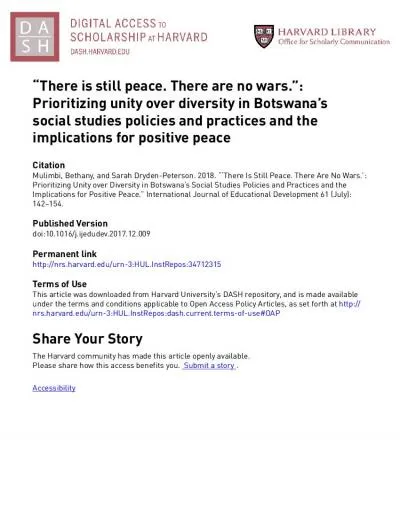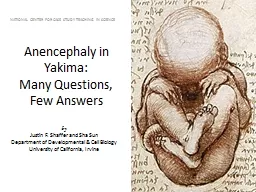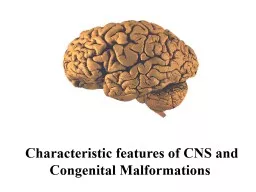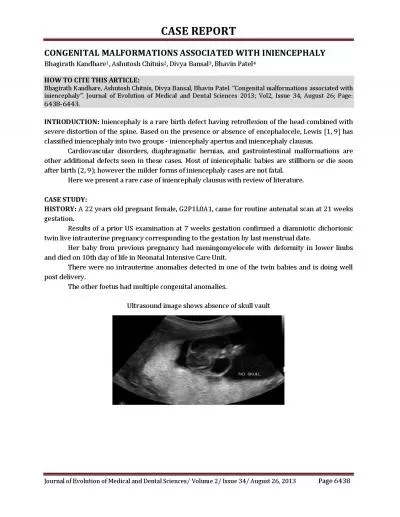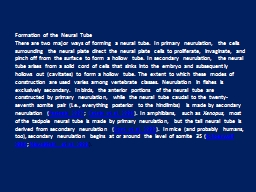PPT-Neural Tube Defect Surveillance in Botswana:
Author : luna | Published Date : 2024-02-03
20142022 12 October 2022 Modiegi Diseko Tsepamo is funded by NIH NICHD R01HD080471 20142018 R01HD095766 20182022 P01HD107670 20212025 Tsepamo Study AIMS In 201213
Presentation Embed Code
Download Presentation
Download Presentation The PPT/PDF document "Neural Tube Defect Surveillance in Botsw..." is the property of its rightful owner. Permission is granted to download and print the materials on this website for personal, non-commercial use only, and to display it on your personal computer provided you do not modify the materials and that you retain all copyright notices contained in the materials. By downloading content from our website, you accept the terms of this agreement.
Neural Tube Defect Surveillance in Botswana:: Transcript
Download Rules Of Document
"Neural Tube Defect Surveillance in Botswana:"The content belongs to its owner. You may download and print it for personal use, without modification, and keep all copyright notices. By downloading, you agree to these terms.
Related Documents

